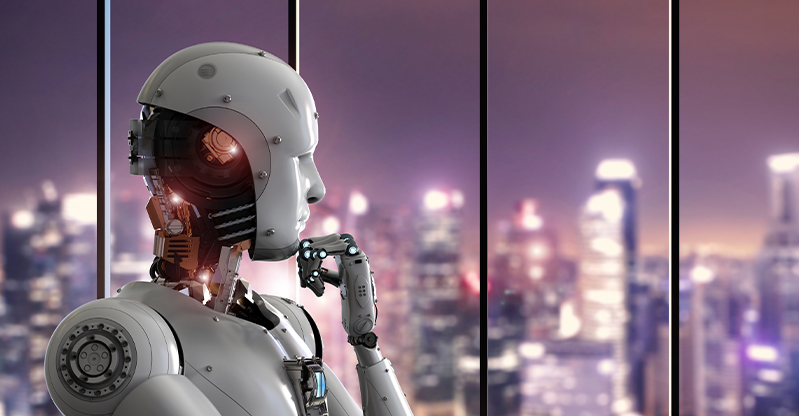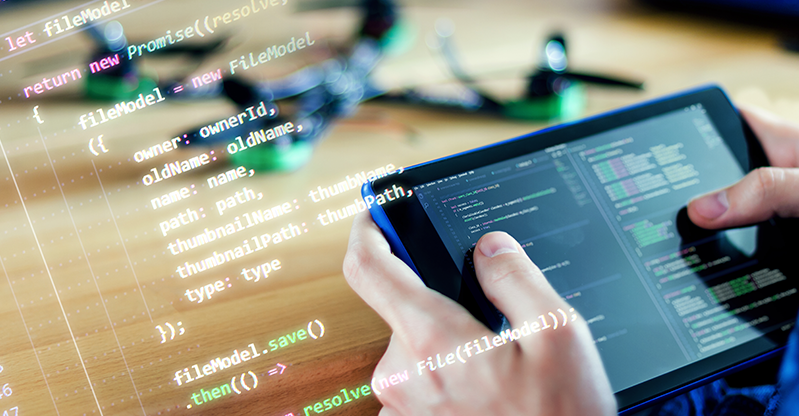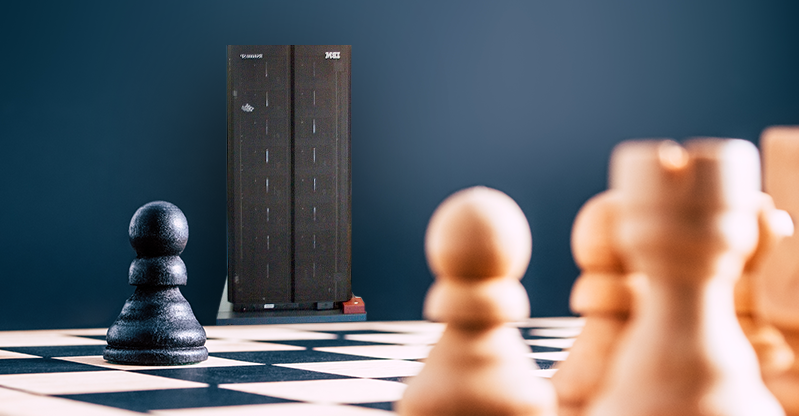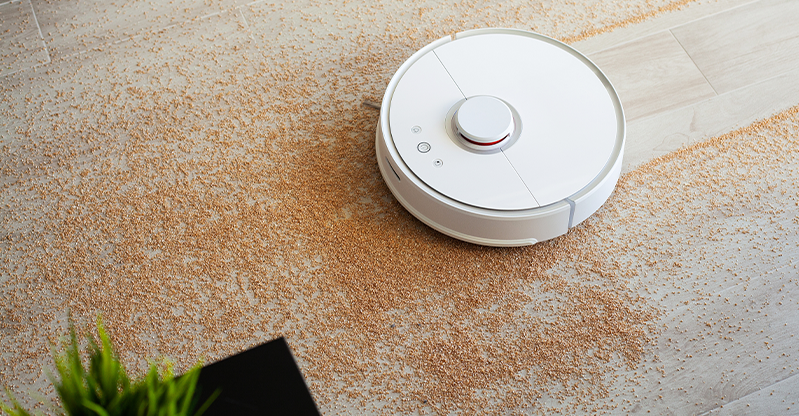Do you remember as a kid watching sci-fi shows like The Jetsons, thinking how awesome it would be to have a robot butler? Or maybe you thought Arnie was super cool as the T-800 in Judgement Day, here to save the world? Hasta la vista, baby! Perhaps Transformers was your thing: a robot alien race that could transform into trucks, automobiles, and fighter jets was the kind of thing that really captured the imagination.
The truth is that robotics is simply exciting. And the more familiar you are with the world of it, the more that excitement builds. Because it wasn’t that long ago that robots couldn’t even walk upstairs. Well, some can now. And do a lot more besides. While others can have a pleasant chat with you over tea (not that they’d be the ones drinking the tea — maybe Earl Grey motor oil?).
We’re not at a robot Jeeves yet. Jeeves-2000, the butler bot, is still some way off. But we do have some very helpful robots right now. And where we’re going is a cause for both shock and awe.

The possible role of robots in our future
Sci-fi writers of the mid-20th century had speculated a world where robots served humans in various capacities, including fighting in our wars for us; cleaning our homes; fixing spacecraft in outer space; and perhaps even helping us decide what to wear for tonight’s gala dinner.
Isaac Asimov (a giant in the world of science fiction) even had a series of books about robots that dictated three laws they must follow. This is because he realized robots needed to act “ethically” or there could be dangers. A not-uncommon fear among many. Think about all the dystopian films involving robots as the bad guys. So, Asimov proposed these laws:
First law: A robot must not harm a human or, through inaction, allow a human to be harmed. Second Law: a robot must follow the instructions of a human except where it violates the First Law. Third Law: a robot must protect itself except in incidences that conflict with the First and Second Laws.
Why is this important? Because robots are speculated to one day be able to think for themselves — to develop sentience through machine learning. This means they might question if humans are actually necessary in the world. As far as sentience is concerned, one Google employee is convinced that that day has already arrived, in the form of a chatbot (though most others disagree). The critics say it’s simply mimicry based on how the AI scours the internet and absorbs information, such as the way people speak and ask questions.
But think about this scenario: Imagine you’re talking to two people on the internet. But you can’t see them. Such as your average encounter with a person through a chat window on a customer support store page. Except you’re chatting to two “people”, but one is actually a bot. And you can’t tell which is which, no matter what questions you throw at them. Does that mean we’ve got machine learning down to a fine art? Or does it mean sentience has effectively been reached in an AI? Now that’s an interesting thought to consider.

What a robot is and how this is related to AI and machine learning
Robots are defined as machines capable of carrying out autonomous or semi-autonomous tasks. Car production levels spiked when robotic arms were added to the production line. They are more efficient than humans, capable of following small instructions programmed into them to effectively speed up the process, never tiring. Except for routine maintenance, there’s no need for downtime. No wonder prospective employers will invest a lot in the beginning to save even more capital in the long run. These arms are autonomous, doing the job they were programmed to do without needing controllers. But these are simple robots and have been around since the 80s. They simply follow a set of coded instructions.
Where robots get interesting is when they become autonomous in a different sense. In a machine-learning sense. Machine learning is when the artificial intelligence of a program, a bot (an “entity” or independent program that exists on the internet as an autonomous being), or a robot improves over time. The code is written in a way that improves the bot’s performance continually. For instance, the supercomputer that defeated in a match a chess grandmaster (Garry Kasparov), Deep Blue, did so through some fundamental developments in machine learning. It included, of their sets of matches, an unexpectedly intuitive move that the Russian grandmaster accused of being a foul.
He said another grandmaster must have had input into the computer. This was a completely unfounded accusation with zero evidence supporting it. Instead, it serves as the earliest form of machine learning displaying intuition in strategy. The fact that Kasparov accused Deep Blue of cheating in a moment of anger is a huge compliment to the team of programmers who made and coded the computer. Now, even the best chess master in the world will always lose to a properly programmed app on your smartphone. to a properly programmed app on your smartphone.
Then in the mid-2010s, a game thought to be impossible for a computer to beat a master in, Go, turned out to be false. Go is an ancient Chinese strategy game that utilizes simple, single-unit pieces. It is played by placing your pieces on the board with many intersecting points in order to surround your opponent’s pieces. If you do this successfully, you remove their pieces and claim the territory. This goes to your overall score and the player with the most territory when no more moves are possible is the winner. It is considered a heavily intuitive game:
“While the Baroque rules of Chess could only have been created by humans, the rules of Go are so elegant, organic, and rigorously logical that if intelligent life forms exist elsewhere in the universe, they almost certainly play Go.” ― Edward Lasker
This is largely due to the fact machine learning had developed to such a state that computers could now outthink humans in the most complex tactical and strategic levels. And do so by adaptive learning. Which begs the question: how long until AI becomes self-aware?
We need to know this in preparation for the future of work. Where will we be in 20 years? We all know the fear that robots or AI will make us redundant in our jobs. Even in industries long-considered safe from robots, like the creative agencies, robots and AI will be getting increasingly “creative smart”. Essentially generating a great idea is often about combining two other ideas. AI can do this. They can make their own music (if not lyrics just quite yet), and with just some keywords, they can do fully-fledged art pieces.
But on the other hand, we’re often optimistic about the future: like how many people today already enjoy having menial jobs taken off their hands by robots. Perhaps an ideal age is coming when there is no more human underclass.

The new working class
Want your tiles cleaned without having to do it yourself? This back-breaking task can be off your back for simple robots that don’t cost a fortune. They’re circular, with wheels, rolling across your floor with sensors that detect objects like your cozy couch or your three-year-old playing with his block toys.
The robot is simple function over form. However, it is sort of cute as it goes about its business. But it’s a lot more intelligent than your Creepy-Crawly in your pool. It uses algorithms to get a sense of the surroundings in the room, so it learns where to go most efficiently. As it gets “used” to your home, it becomes more efficient in its cleaning because it’s mapped out that room. Other versions of this type of robot work as vacuum cleaners. Perfect for clearing the dust on the floor of your study, making it a fresh-feeling environment for getting your work done. In this sense, the “new working class” is already here. And they’re not just here to stay. They’re here to improve. Maybe it won’t be long before we get our fully-fledged butler bot, after all. But for all their impressive room sensory-based movement, they’re still essentially flat circular machines with wheels. They can’t exactly climb the stairs to get to your carpeted bedroom. But there are robots that can. And do so much more when it comes to mobility.

Ninjitsu goes cybernetic
Ever watched those classic ninja flicks where these deadly Japanese assassins and saboteurs do somersaults, spins in the air, and land deftly on their feet? Well, there are robots that can do the same. Seriously. There was a time when people thought it was impossible for robots to climb stairs. Now they can not only charge up the stairs, but they can also probably win the Olympics Gold for hip-hoppity swinging from a pommel horse. Best of all, as long as they’ve got battery energy, they never get tired. Think of the applications! For one thing, we could have an entirely new category of sports, one where robots compete against the best athletes humanity has to offer. Kind of like the Deep Blue chess example we gave earlier. Except it is physical sports this time. But even a heavyweight boxer probably wouldn’t enjoy the prospect of facing off against a ninja bot. Though it would be fun for the kids to go skateboarding with their new metallic pal at the local rink (imagine the tricks Skate Bot could pull!). You’ll be amazed at what these droids can do these days. Check it out:
Social robots: now everybody can have friends!
AI will play a huge role in the future of robotics resulting in one day fully autonomous robots capable of reasoning and thinking independently of their programming (through developments in machine learning, for instance). In fact, programming robots is now about the accumulation of data and the robot learning from it. AI is capable of learning from thousands upon thousands more experiences than you can do in your own field in your entire lifespan. This is how humanity lost Go to an AI. But interestingly, the improvement of social experiences by learning how to interact with others over multiple occurrences is also replicable. And you can see the results of it in action here — you’ll be astounded:
As you can see, you’re almost fooled into thinking this is a robot of the level you’d find in Star Trek. Designed to emulate facial emotional responses, it shocked this crowd with its mimicry of the human face. The showstopper, though, was its ability to respond to questions naturally and without difficulty. If this is where we are now, imagine where we’ll be in twenty years’ time.
Time to get on board the robot revolution.
It’s still the programmer who has ultimate control of these robots. Sure, that level of control is slowly diminishing year by year. But without the programmer to instill the ability for an AI to learn from data and experiences, we wouldn’t have machine learning. Without machine learning, there are no awesome social bots to hang with, no Go AI to teach us how to play the most complicated game on Earth better, no specialist robots doing fantastical stuff like running around a complex obstacle course.
The future of robots is uncertain. In that, they may awaken into a conscious state and become equal citizens of the world along with us. Or bring about world peace through their logical way of thinking and incorruptibility. Perhaps they’ll just make life a lot easier by being our friend who’s always “online” day or night. The applications are infinite. But right now, and for the foreseeable future, we need human minds and human brains that can program these robots on how to go about “thinking” and what to do.
Does your child have any interest in robots (many children do!)? Or do you want to give your kid an introductory education in a world of spectacular developments? Then start them on their quest by enrolling in our live, online Robotics classes today. Maybe they’ll make the machines of tomorrow that’ll bring various enhancements to our lives.










I like the efforts you have put in this, regards for all the great content.